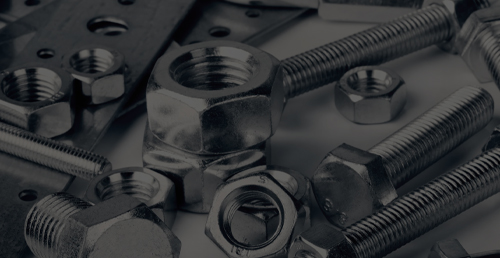tapping screws for wood
Tapping Screws for Wood A Comprehensive Guide
When it comes to fastening materials in woodworking, tapping screws are a preferred choice for many craftsmen and DIY enthusiasts alike. Unlike traditional wood screws, tapping screws are designed to create their own mating threads in the material they are driven into. This unique capability makes them particularly useful in various woodworking applications, where a strong, secure bond is essential.
What Are Tapping Screws?
Tapping screws are threaded fasteners that, when driven into a material, create a strong connection without the need for pre-drilling a pilot hole. The design typically features sharp threads that can cut into the wood, enabling the screw to tap its own thread within the material. This quality not only reduces the effort and time involved in the project but also minimizes the risk of splitting the wood, which can happen with standard screws if not properly pre-drilled.
Types of Tapping Screws
There are several types of tapping screws suitable for wood applications
1. Self-Tapping Screws These screws create their own threads as they are driven into the material. They are widely used for fastening light to medium loads in wood, such as cabinet hardware or fixtures.
2. Thread-Cutting Screws Unlike self-tapping screws, thread-cutting screws remove material instead of compressing it. They are typically used in softer woods and can ensure a tighter fit.
3. Sheet Metal Screws Although designed primarily for metal applications, these screws can also perform well in wood, particularly when dealing with thin panels or layered pieces.
Benefits of Using Tapping Screws for Wood
1. Ease of Use One of the greatest advantages of tapping screws is the ease with which they can be installed. Without the need for pilot holes, they can be directly driven into the wood, saving time and labor.
tapping screws for wood

2. Strong Hold The self-tapping feature ensures that the screw creates a secure fit in the material. When installed correctly, tapping screws can withstand considerable tension and shear forces, making them ideal for structural applications.
3. Reduced Risk of Damage Traditional screws can sometimes split or crack wood, particularly when driven near edges. Because tapping screws are designed to cut rather than compress, they significantly reduce this risk.
4. Versatility Tapping screws are available in various lengths, diameters, and coatings, allowing woodworkers to select the most appropriate type for their specific needs.
Installation Tips
When using tapping screws in wood, consider the following best practices
- Choose the Right Size Select a screw that matches the thickness and type of wood you are working with. For denser woods, opt for screws with deeper threads.
- Use Proper Tools A power drill or screwdriver with the appropriate bit size can prevent stripping and ensure a clean installation.
- Apply Even Pressure When driving the screw, maintain consistent pressure to allow the screw to tap effectively into the wood without wobbling or damaging the surface.
- Watch for Resistance If the screw encounters excessive resistance, it may indicate that the screw is too large for the material or that it’s misaligned. Remove it and start over if necessary.
Conclusion
Tapping screws are an excellent choice for woodworking projects, combining efficiency with strength and reliability. Their ability to tap their own threads simplifies the installation process while providing robust holding power. Whether you are building furniture, creating fixtures, or engaged in home repairs, tapping screws can help you achieve a professional finish with ease. Embrace the benefits of tapping screws in your next woodworking project, and experience the convenience and effectiveness they bring to your craftsmanship.
-
Wedge Anchor Bolts: Secure Fastening SolutionsخەۋەرلەرAug.05,2025
-
Insulation Fixings: Secure and Durable SolutionsخەۋەرلەرAug.05,2025
-
Full Threaded Studs: Versatile Fastening SolutionsخەۋەرلەرAug.05,2025
-
Expanding Fasteners: Secure and Reliable SolutionsخەۋەرلەرAug.05,2025
-
Butterfly Toggle Anchors: Secure and Easy to UseخەۋەرلەرAug.05,2025
-
Bracing Solutions for Steel StructuresخەۋەرلەرAug.05,2025
